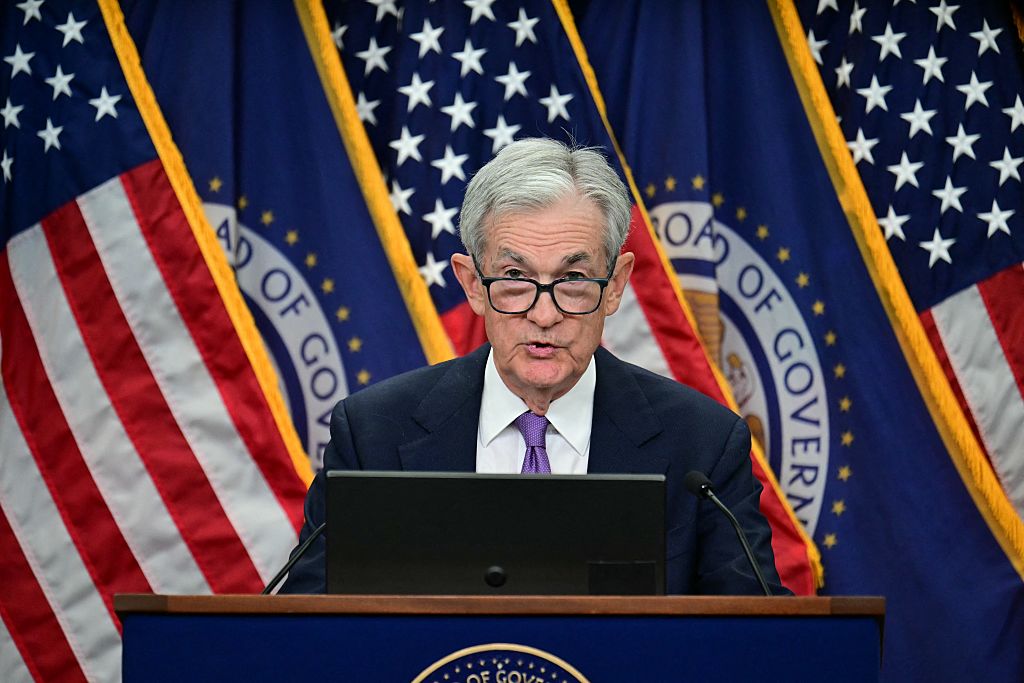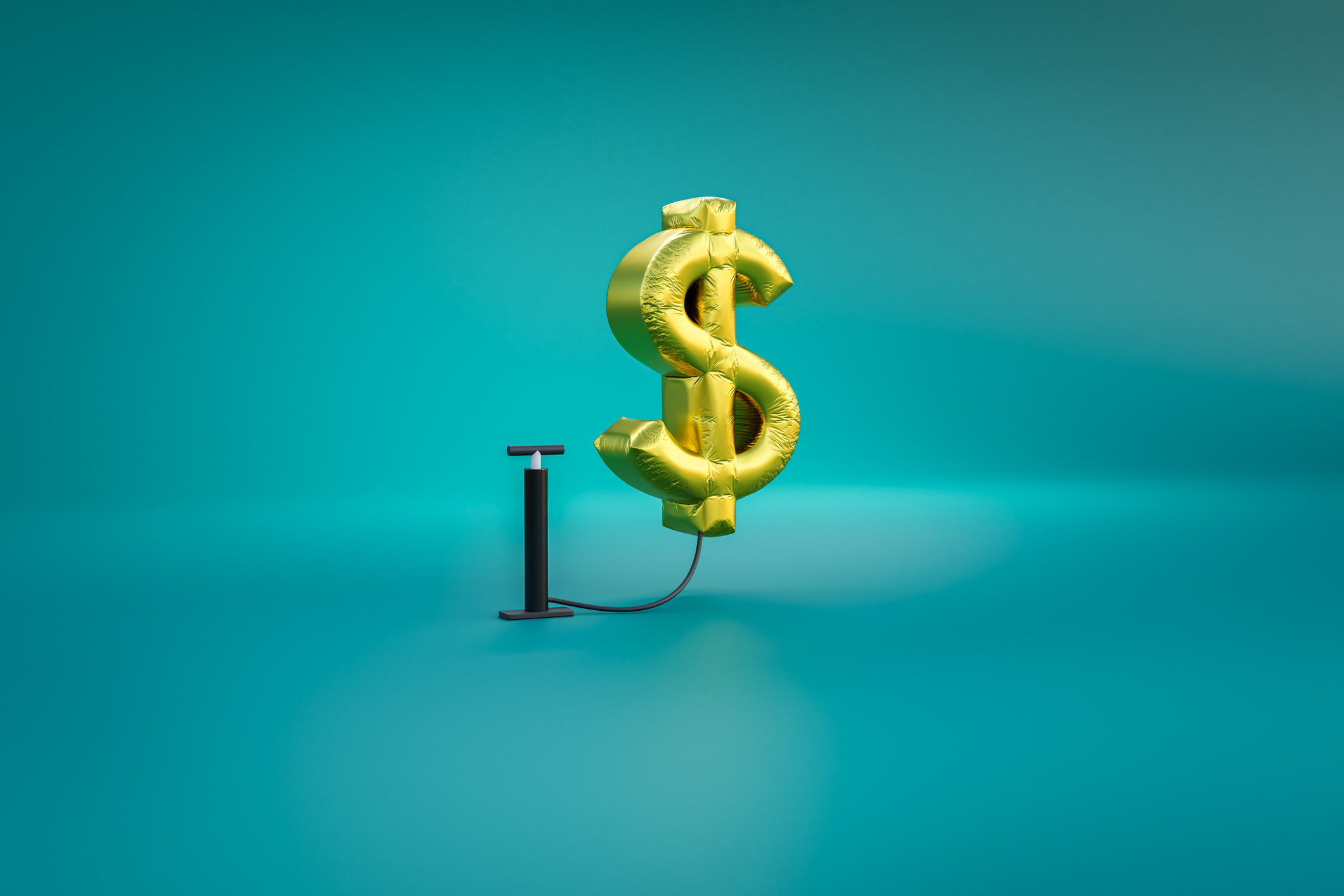Kiplinger Special Report: Key Business Costs for 2024
Expect slight cost increases across the board and better profits.

To help you understand what is going on in the economy and beyond, our highly experienced Kiplinger Letter team will keep you abreast of the latest developments and forecasts (Get a free issue of The Kiplinger Letter or subscribe). You'll get all the latest news first by subscribing, but we publish many (but not all) of our forecasts a few days afterward online. Here’s the latest...
To help you prepare business budgets for next year, here are some fresh forecasts on a range of key costs.
Interest Rates
The economy is set to grow more slowly in 2024. Figure on 1.1% GDP growth, versus 2.3% in 2023. Look for growth to pick up in the second half of the year as the Federal Reserve likely cuts interest rates a small amount: a half or one percentage point, perhaps.
If the Fed cuts rates, other short-term rates will decline, too: consumer lending, auto loans, home equity lines of credit and interest earned on safe Treasury bills. Long-term rates will likely ease, with the 10-year Treasury note dipping to 3.7% or so. The 30-year mortgage rate will fall a bit as well, dropping to around 6.3%. Meanwhile, the unemployment rate will stay low, bumping up to 3.8% at the end of this year, then peak at 4.2% next year before falling to 3.7% at the end of 2024.
Inflation
Inflation should continue to ease, falling to around 2.5% by the end of 2024.
Expect corporate profits to jump 12% next year for large companies, after little growth this year. Consumer discretionary, information technology, communications services and industrials are expected to see the strongest growth. With the slowing economy come more modest pay hikes of around 3.5%, versus 4.2% increases this year.
Industries facing a business slowdown themselves will likely restrict pay increases, while others will shell out 4% raises on average.
Benefit compensation — up about 4%, led by a 6% rise in health insurance costs. Prescription drug prices will rise 3.4%, with drugs under contract increasing 2% and noncontract prices 4% higher. New, expensive weight loss drugs are a wild card.
Energy Costs
Look for most energy prices to rise next year if we can dodge a recession. For regular unleaded gasoline, figure on an average price of about $3.80 per gallon for the year as a whole, versus the $3.50 national average so far this year. Diesel, averaging about $4.30 nationally, up from this year’s $4.12 level.
The outlook for natural gas prices has the most uncertainty. Prices plunged late last year and early this year due to warm winter weather in the U.S. and Europe. Stockpiles of gas in storage are high now, which tends to keep prices low. However, we look for gas prices to rise at least a little in 2024, with the possibility of a spike if the coming winter proves especially cold. Better budget for at least a modest rise in your gas costs versus what you end up paying this year, on the order of 5%-10%.
Electricity costs will be up, but probably a smaller increase than what most users have seen recently, as this year’s drop in natural gas prices slowly feeds into the price electricity customers pay (gas is the top fuel for generating electricity in the U.S.). Factor in a 3%-5% increase in your electric rates, on average, barring a recession.
Transportation
A glut of excess capacity should continue to weigh on ocean shipping rates as new ships that carriers add outnumber older ships that are scrapped. As a result, look for average ocean freight rates to fall by 33% versus 2023, per the forecast of maritime consultancy Drewry. That’s on top of even steeper rate declines this year.
If you ship by air, budget for modest rate increases next year. The industry is dealing with overcapacity now, but a pickup in demand, coupled with retirements of older, less profitable aircraft, should tighten the market and lift rates by 10%-20%, according to Neel Jones Shah, senior vice president and global head of airfreight at Flexport.
Payroll
Payroll taxes: rising, as the $160,200 wage base goes to about $168,000. For firms that pay pension premiums to the Pension Benefit Guaranty Corp, there will be no change in rates, with the exception of inflation-related indexing for flat-rate premiums, which will hover around $101 per plan participant in 2024. Variable-rate premiums for underfunded plans will be $52 per $1,000 of unfunded vested benefits (subject to a $690 or so per-participant ceiling).
Insurance
Expect to pay more for insurance as rates increase across the board. For commercial property insurance, excessive underwriting and challenging conditions in the reinsurance market will push rates up 5%-10%, on average, for properties that aren’t exposed to natural catastrophes, and 15% for those with exposure. Policies that have experienced recent losses, figure on an average increase of up to 15%. Rates for primary casualty insurance: up 5%-10%. Umbrella insurance and excess liability rates are set to go up by about 15%.
Most buyers of cyber insurance are set to see increases. For companies renewing policies: up to a 10% hike. For companies with recent claims or incidents: about 10%-15% increases. Showing a higher investment in security and improvement of internal controls is one way to try to score a premium decrease.
One area declining is rates for directors' and officers' insurance. Public companies should see rates declining up to 10%. Private and nonprofits: a decline of up to 5%. Legal costs for businesses will increase about 3%-5% next year, on average. Look for accounting costs for a typical company to increase up to 10%, reflecting the higher labor costs for accounting companies as they raise wages.
Travel Expenses
Domestic airfares: up moderately in 2024. Fares will inch up this year ahead of the November and December holidays, as they always do, then likely remain at or above prepandemic levels well into next year. If possible, book 2024 trips now to avoid the fare increases. Note that unpredictable fuel prices could up-end forecasts.
Hotel rates: inching up, about 3.5% higher, or about $5 per night.
Car rental rates: heading higher. Look for rates to peak at 5% higher by early spring 2024. Ridesharing services often offer a money-saving alternative and it’s typically cheaper to book a car from an off-site rental site vs an airport.
Building Costs
Office rents are up just 1% for both asking and effective rents as vacancy rates stay elevated. Expect fewer concessions, such as rent-free months, than in past years.
Retail space: flat or rising 2%-3%, on average, with demand staying high.
Warehouse rents: up 5%-10% with record-low vacancies. Strong demand comes from companies wanting to stockpile larger inventories and e-commerce sellers.
Technology
Budget a bit more for tech and telecom, though deals will likely be available in certain segments. PC prices are set to fall this year by about 3% on soft demand and will be flat or up just a bit in 2024. Consumer demand will stay weak next year, but business demand will pick up. Premium PCs and laptops chock-full of features will be pricey.
Weak demand for smartphones and tablets will keep prices in check and there are lots of lower-cost, capable models. Cellular plans are likely to edge up in price as carriers focus on profitability. It pays to shop around for deals. Internet: prices rising for consumers and businesses, though 5G plans offer a cheaper option.
Artificial intelligence chips will continue to see high prices, with high demand and shortages lingering for Nvidia chips. Though tech giants are the major buyers, more firms are buying chips for in-house AI. Generative AI services, such as ChatGPT, are likely to cost more, though the pricing is still being figured out by providers.
This forecast first appeared in The Kiplinger Letter, which has been running since 1923 and is a collection of concise weekly forecasts on business and economic trends, as well as what to expect from Washington, to help you understand what’s coming up to make the most of your investments and your money. Subscribe to The Kiplinger Letter.
Related stories
Profit and prosper with the best of Kiplinger's advice on investing, taxes, retirement, personal finance and much more. Delivered daily. Enter your email in the box and click Sign Me Up.

John Miley is a Senior Associate Editor at The Kiplinger Letter. He mainly covers AI, technology, telecom and education, but will jump on other business topics as needed. In his role, he provides timely forecasts about emerging technologies, business trends and government regulations. He also edits stories for the weekly publication and has written and edited email newsletters.
He holds a BA from Bates College and a master’s degree in magazine journalism from Northwestern University, where he specialized in business reporting. An avid runner and a former decathlete, he has written about fitness and competed in triathlons.
- Rodrigo Sermeño, The Kiplinger Letter
- Joy TaylorEditor, The Kiplinger Tax Letter
- Jim PattersonManaging Editor, The Kiplinger Letter
- Sean LengellAssociate Editor, The Kiplinger Letter
- David PayneStaff Economist, The Kiplinger Letter
-
 Don't Waste Your Money on Bad Gifts. Try This Instead.
Don't Waste Your Money on Bad Gifts. Try This Instead.Holiday Happiness These strategies, backed by behavioral finance, can help you find presents that your loved ones will truly enjoy.
-
 5 Unique Book-Inspired Trips Across America
5 Unique Book-Inspired Trips Across AmericaThere are five great trips to take across America that can immerse you in the culture of your favourite books.
-
 The Delayed September Jobs Report Is Out. Here's What It Means for the Fed
The Delayed September Jobs Report Is Out. Here's What It Means for the FedThe September jobs report came in much higher than expected, lowering expectations for a December rate cut.
-
 Shoppers Hit the Brakes on EV Purchases After Tax Credits Expire
Shoppers Hit the Brakes on EV Purchases After Tax Credits ExpireThe Letter Electric cars are here to stay, but they'll have to compete harder to get shoppers interested without the federal tax credit.
-
 Amid Mounting Uncertainty: Five Forecasts About AI
Amid Mounting Uncertainty: Five Forecasts About AIThe Kiplinger Letter With the risk of overspending on AI data centers hotly debated, here are some forecasts about AI that we can make with some confidence.
-
 Worried About an AI Bubble? Here’s What You Need to Know
Worried About an AI Bubble? Here’s What You Need to KnowThe Kiplinger Letter Though AI is a transformative technology, it’s worth paying attention to the rising economic and financial risks. Here’s some guidance to navigate AI’s future.
-
 October Fed Meeting: Updates and Commentary
October Fed Meeting: Updates and CommentaryThe October Fed meeting is a key economic event, with Wall Street turned into what Fed Chair Powell & Co. did about interest rates.
-
 Will AI Videos Disrupt Social Media?
Will AI Videos Disrupt Social Media?The Kiplinger Letter With the introduction of OpenAI’s new AI social media app, Sora, the internet is about to be flooded with startling AI-generated videos.
-
 The Delayed September CPI Report is Out. Here's What it Signals for the Fed.
The Delayed September CPI Report is Out. Here's What it Signals for the Fed.The September CPI report showed that inflation remains tame – and all but confirms another rate cut from the Fed.
-
 What Services Are Open During the Government Shutdown?
What Services Are Open During the Government Shutdown?The Kiplinger Letter As the shutdown drags on, many basic federal services will increasingly be affected.